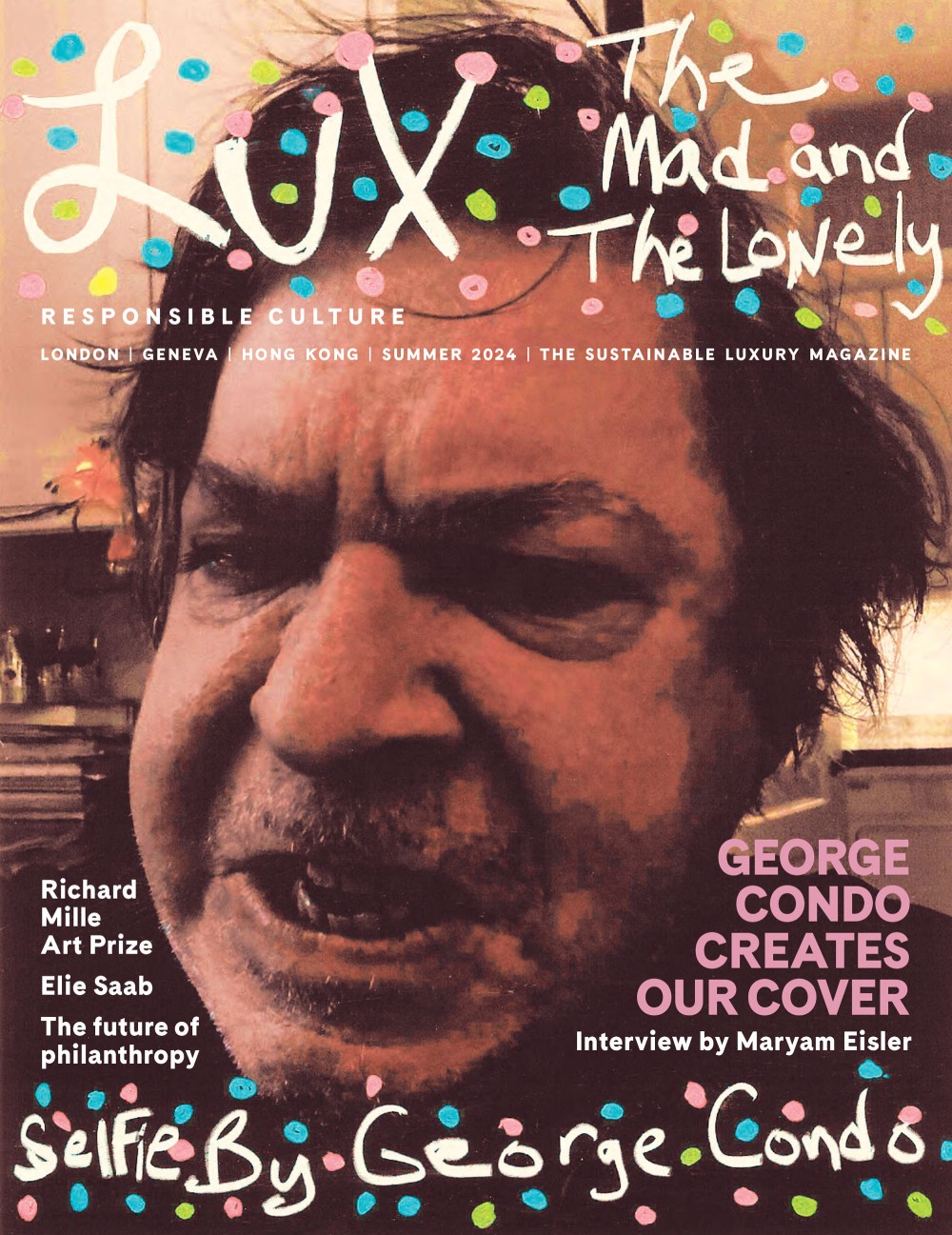
George Condo shot this selfie and painted this logo and these coverlines for our cover. We see it as an ‘anti-cover’ – a reaction to the slick imagery created by magazines and now universally imitated by social media
George Condo has been redefining art for more than four decades. As he unveils a body of work titled “The Mad and the Lonely”, the artist speaks with Maryam Eisler about the human condition and society’s outcasts. Condo created this issue’s cover and logo for LUX, and showcases these paintings for the first time below
Maryam Eisler: Charles Bukowski once said, “Only the crazy and the lonely can afford to be themselves”. Would you agree?
George Condo: I would agree with Bukowski. However, I would say the mad and the lonely are perhaps more victims of their own internal circumstances, as opposed to having the choice to make that distinction.

George Condo at work in his studio
ME: Would you consider madness and loneliness as necessary precursors to the act of creation?
GC: I don’t think so. I imagine the mad and the lonely as a state of mind that comes over the artist in moments of joy and happiness as well. Suddenly, without warning, the subconscious kicks in and drives him, or at least myself, into dark corners within me to bring out reflections, or rather observations of those disparate souls in life who have no choice but to be outcast or peripheral to the everyday working-class person, and are unable to function within the constraints of such boundaries. At which point, they become either homeless or simply rejected from society.

George Condo, Illustration by Jonathan Newhouse
ME: Henry Miller once said, “The artist is always alone”. Are you mad and lonely? If so, is it by choice or by necessity?
GC: I am not mad and lonely. However, the portraits I paint are depictions of those who are. I like to take selfies, like the one on the LUX cover, because they make me laugh. Miller’s books always make me laugh as well. They are practically selfies in and of themselves.

Artwork created for LUX, 2024, by George Condo
ME: Have we become sad, lonely and angry as a society? Have we forgotten empathy? How would you propose saving us?
GC: I cannot save the world from its own extinction. We are the new dinosaurs living through the ice age, the cyber age, the world of disinformation and scam; a world at war within itself, like fires that keep popping up in various cultures – cultures that have been driven to believe in war against each other, a rather brutal form of extinction.
‘Acceptance’, 1989, by George Condo
ME: Sciences help us understand the natural world; social sciences help us measure human behaviour. Is culture alone capable of understanding the individual’s emotions?
GC: The emotional aspects of a child are the purest. Once the child becomes hardwired into various systems of belief, whether by political pressures or religious pressures passed to them by their elders, is when the trouble begins. The actual science of medicine and the science of research are subject to government regulations that perhaps aid the big pharmaceutical companies to continue to produce drugs. Many of the drugs they have produced previously have led to the need of the new drugs. For all we know, there has been a cure for dementia or cancer that has been held back from us for years. For all we know, it’s like trying to get to the truth about aliens. I don’t have an answer to that. I find that art is the truth; it is the only manmade representation of what one truly has to say and can believe in.
ME: How would you qualify the individual’s experience when they are confronted with a great artwork?
GC: I think the first feeling is one of great joy in seeing the remarkable impact of either colour or form or the way things are depicted and the spirit of an artist’s true beliefs.

‘Appearance’, 2023, by George Condo
ME: It was Ralph Waldo Emerson who once said that we consume culture to enlarge our hearts and minds. Would you agree that the very best of the arts induce humility and empathy?
GC: I would say Emerson was able to express some of the most beautiful essays ever written and I agree with everything he has said. His quotes from Aristotle are particularly amusing.
ME: Do you agree that art has the power to render sorrow into beauty, loneliness into a shared experience and despair into hope?
GC: I do agree with that. I believe it’s possible in art to turn that which is negative into positive, and that some of the most beautiful art is of the melancholic. One might find in the music of John Dowland in the early 17th century such beautiful and melancholic songwriting and ensemble music, such as ‘Lachrimae’, or ‘Seaven Teares’ as well as ‘A Pilgrimes Solace’, that it becomes transformative. This mood pervades throughout the arts, in painting as well, from this period. One might think of Caravaggio’s ‘Death of the Virgin’, which is currently at the Louvre.
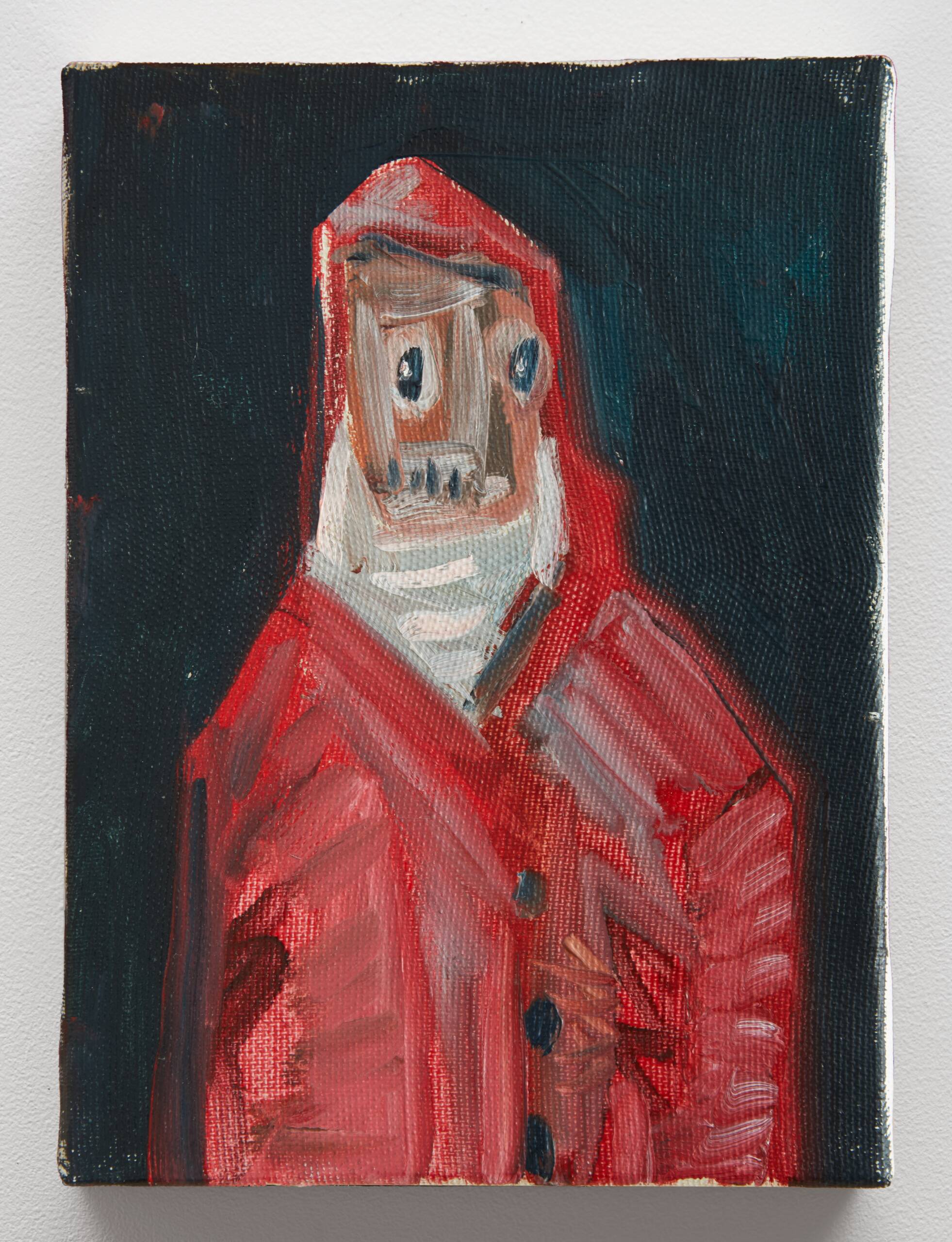
‘The Red Nun’, 2017, by George Condo
ME: Dakis Joannou said, “If it doesn’t have psyche, it cannot be art”. How would you describe the psyche when it comes to your own art production?
GC: The psyche is an Ancient Greek expression and it still stands true. If the art does not have a mind of its own, irrespective of the viewers, it’s no good.
ME: Are you excited by your upcoming collaboration with Dakis Joannou’s Deste Foundation for Contemporary Art on the island of Hydra?
GC: I’m very excited, I’ve known Dakis for quite some time now. He is a very wise man with an extremely acute sense of aesthetics and imagination – even to have realised the Slaughterhouse as a place to show art tells you just how brilliant he is.

‘Dark Facing Light’, 2023, by George Condo
ME: Does Hydra itself play a big part in this excitement? If so, why?
GC: Yes. This is a mythical island and it has all the elements of the ancient and modern times combined within one place.
ME: What are you hoping to achieve with this initiative?
GC: My hope is to somehow combine minimalism and figuration in one exhibition and to have a kind of dialectic experience take place: the cold and the warm coming together and liberating the constraints of both forms of art from being anything less than human.
‘The Renegade’, 2009, by George Condo
ME: Would you say that this is a big departure stylistically and thematically from what you have produced in the past?
GC: This will be the first time I have worked in such a way as to focus the attention on the outcasts of society and glorify or rather dignify them in the context of a high-art experience.
ME: Where have you found your main sources of inspiration? Have these sources shifted in recent years or for the work you are about to present in Hydra?
GC: My art is always in flux with my imagination. I don’t necessarily draw or paint in a representational manner; it’s more an internal dialogue in my mind that is thrust onto the surface of a canvas to express my inner thoughts and feelings.

‘The Death of the Virgin’, 1606, by Caravaggio (Fine Art/Alamy Stock Photo)
ME: What are you fascinated by these days? What do you abhor?
GC: Well, I am always fascinated by food, I must admit. I love to cook and try out new recipes or recreate things I’ve eaten that I really love. I even had such a great Greek lamb sandwich in Athens that I recreated the food-truck experience for Dakis here in New York and he loved it! I abhor war and suffering. I wish the wars would all end.
ME: What are your plans after Hydra?
GC: I will just come back home. My daughter is expecting a baby girl and I’m hoping to spend time babysitting!
George Condo’s exhibition “The Mad and The Lonely” is at the Deste Foundation Project Space Slaughterhouse, Hydra, Greece, 18 June-31 October 2024;













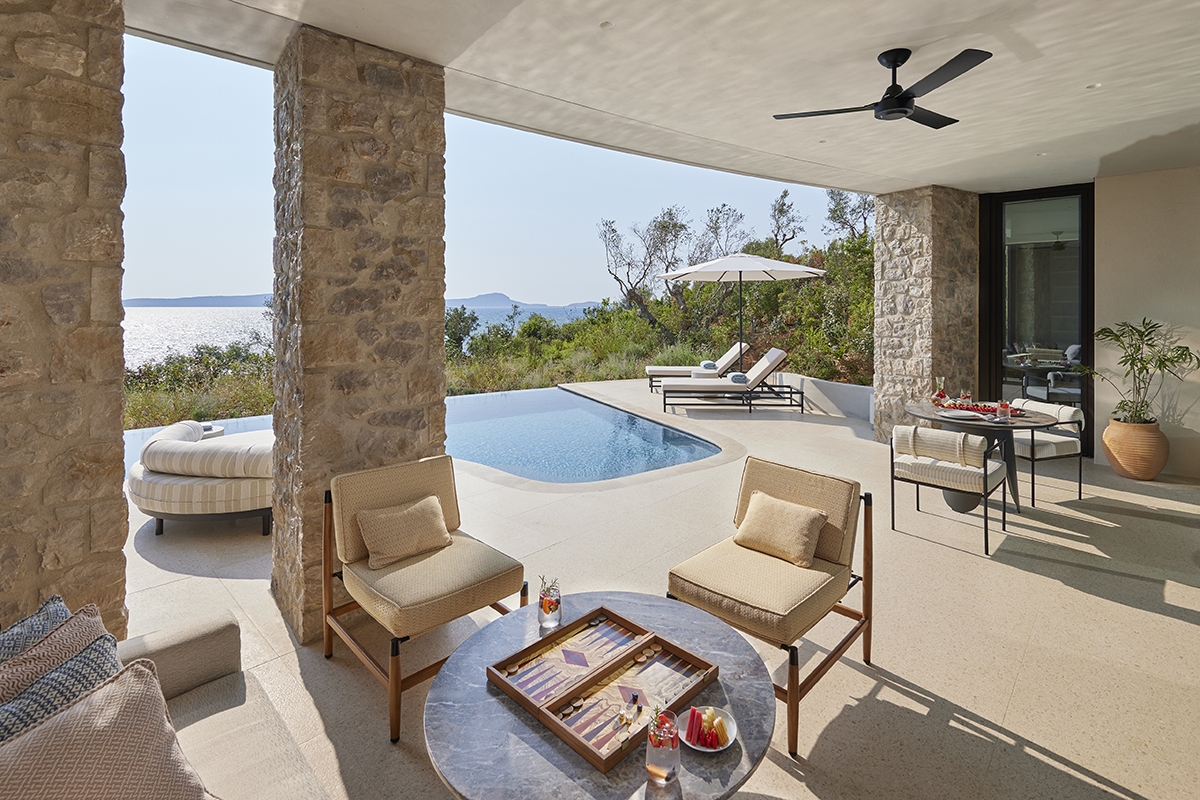


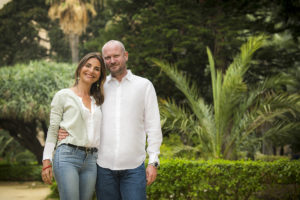


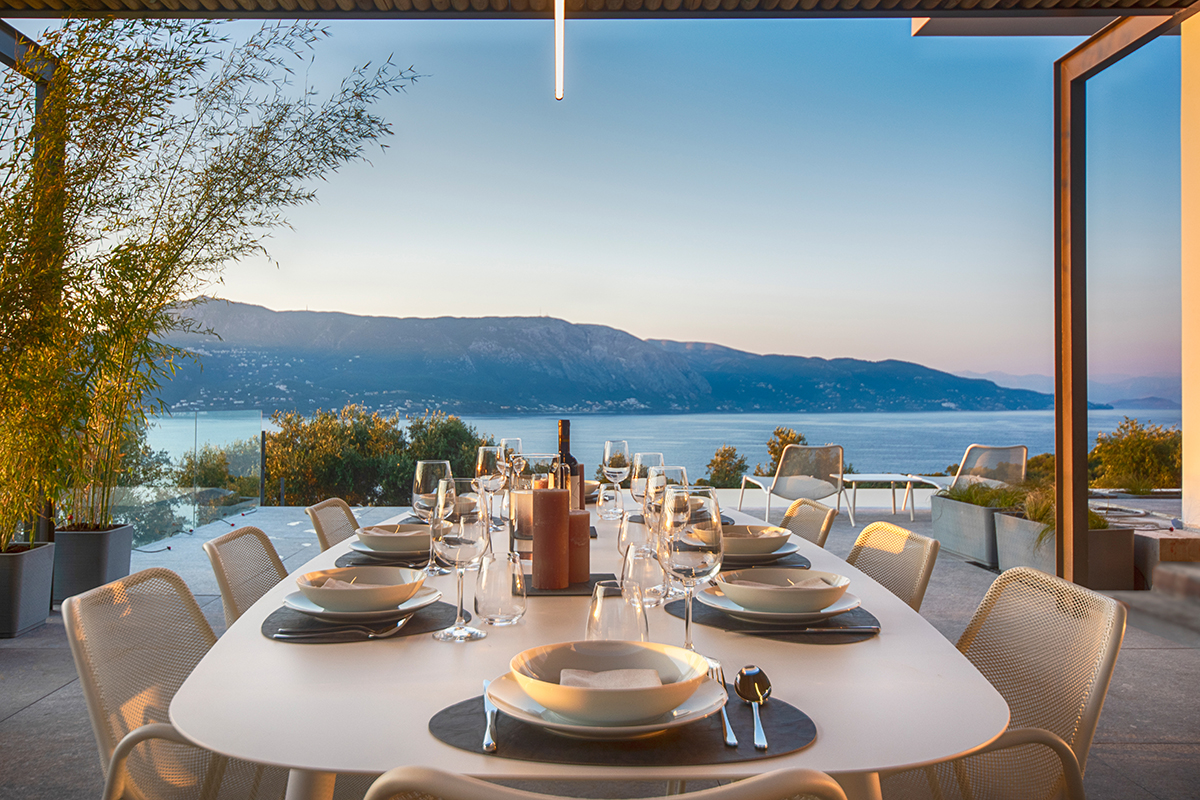











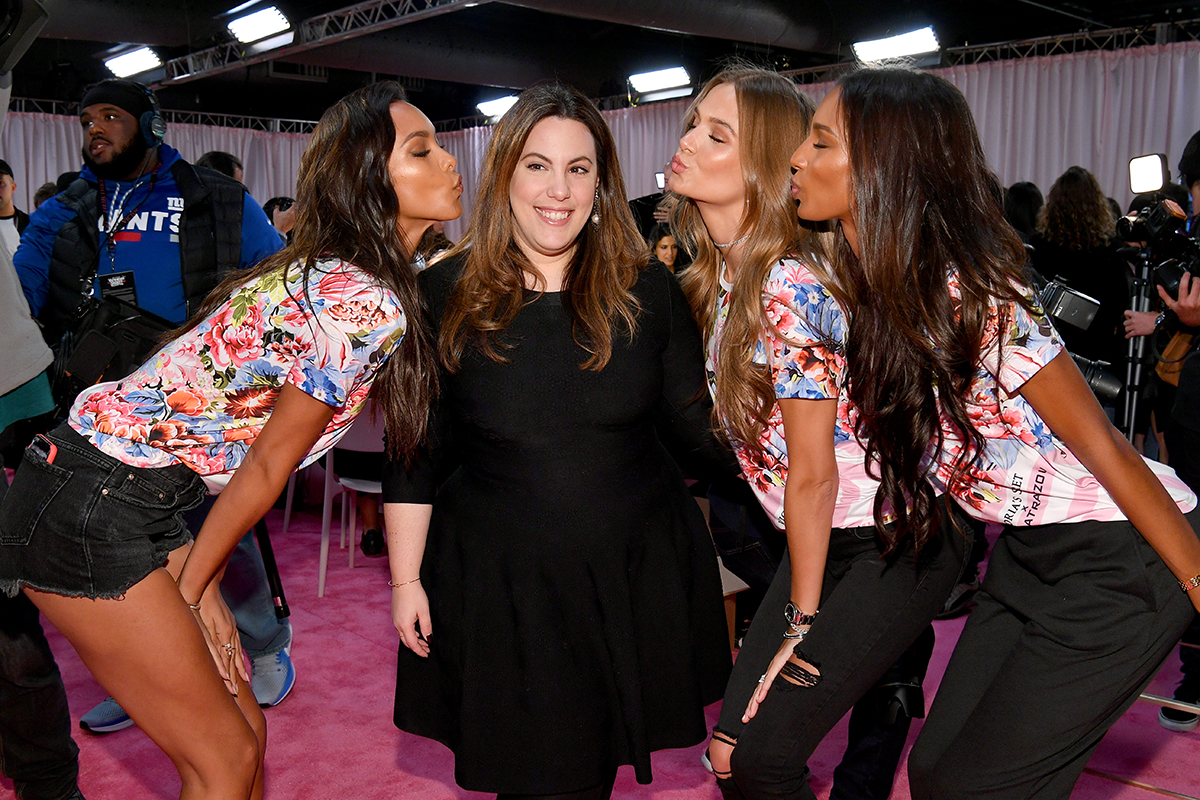


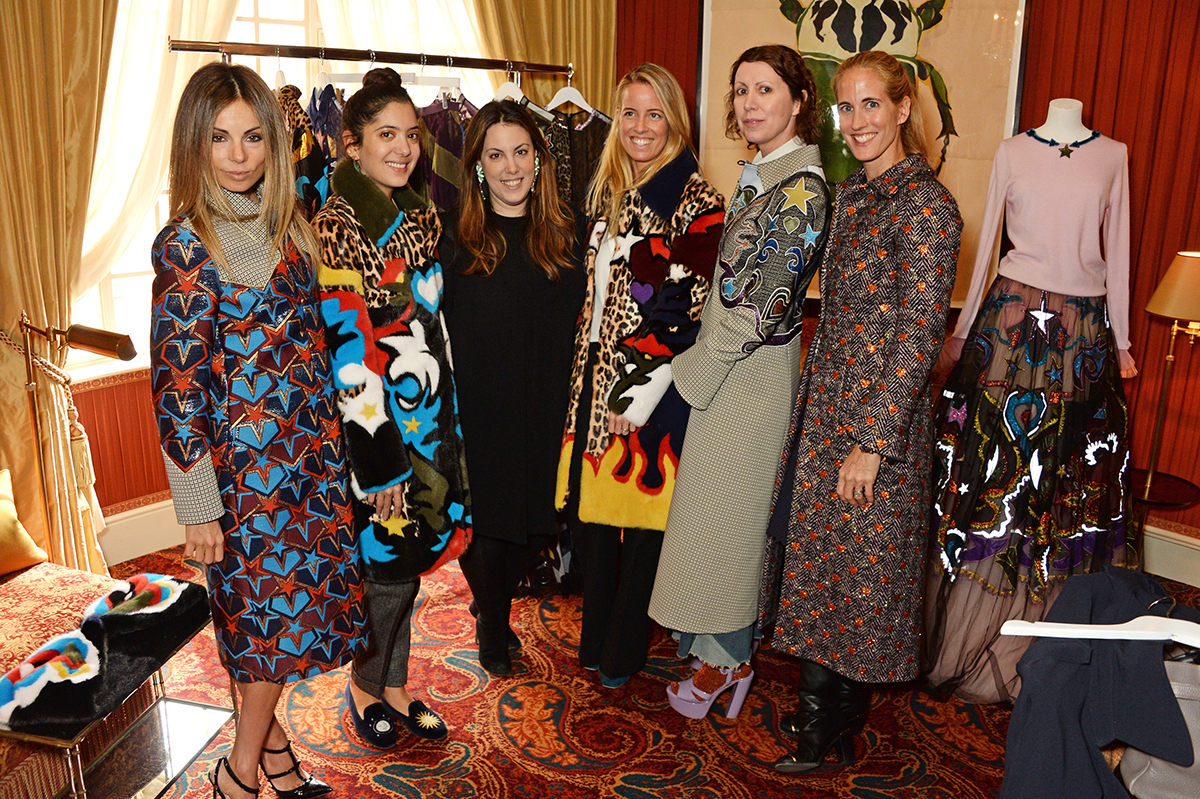


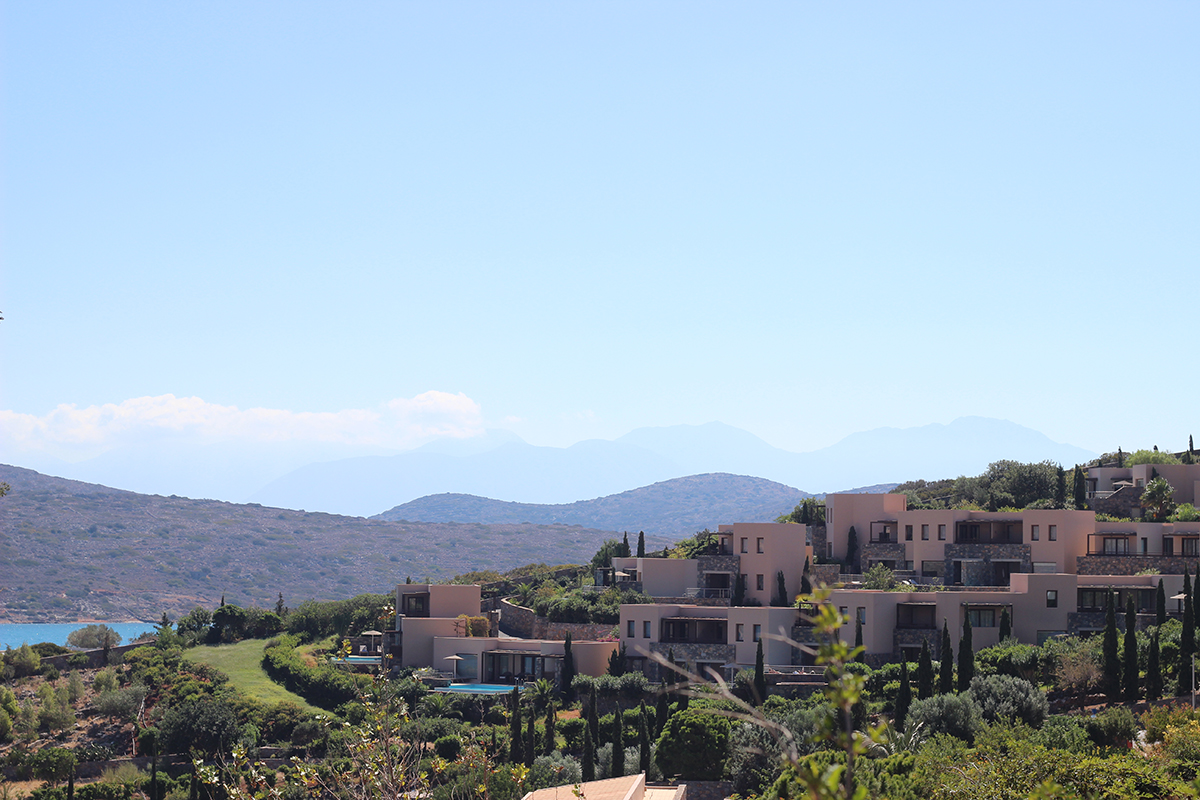

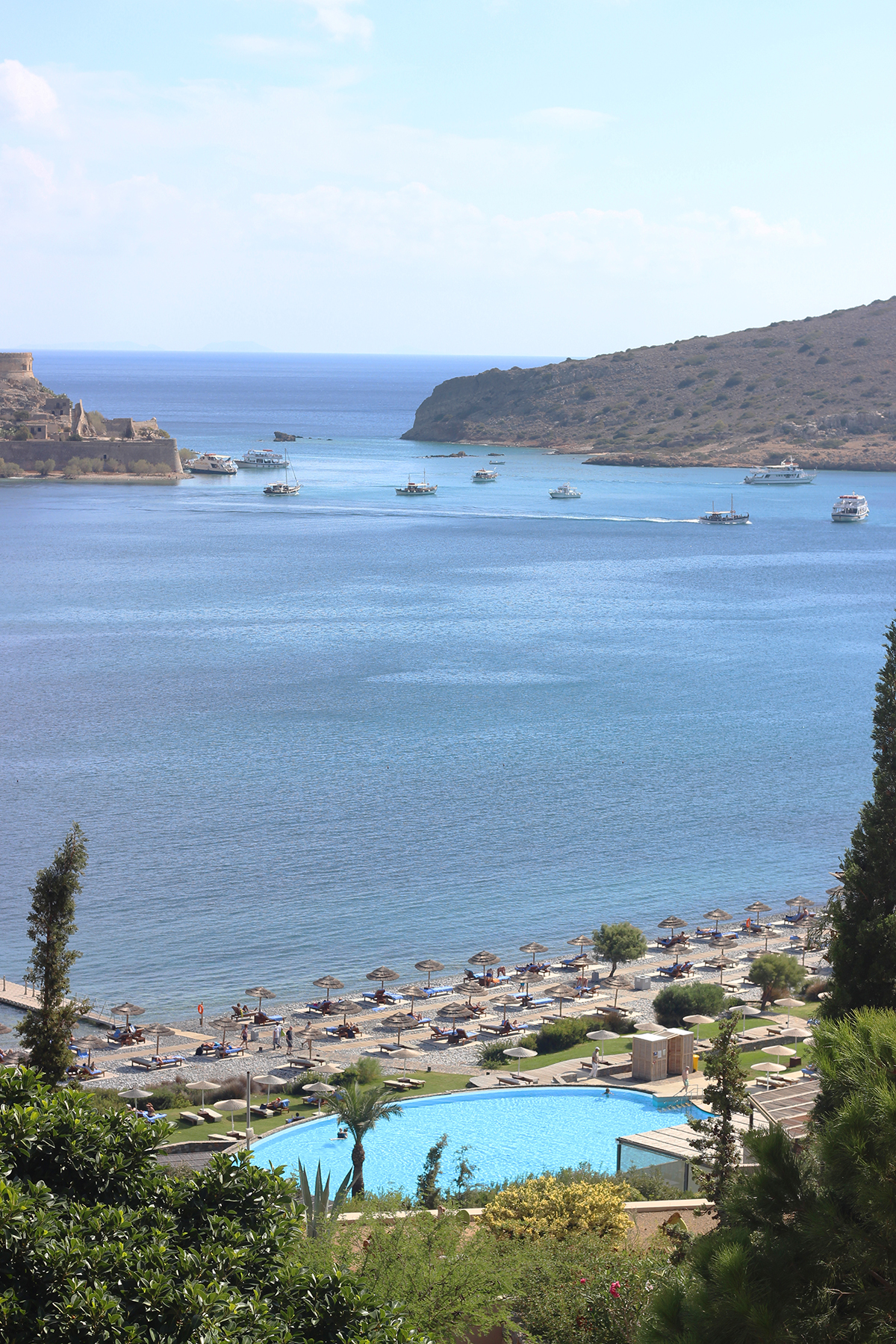





Recent Comments